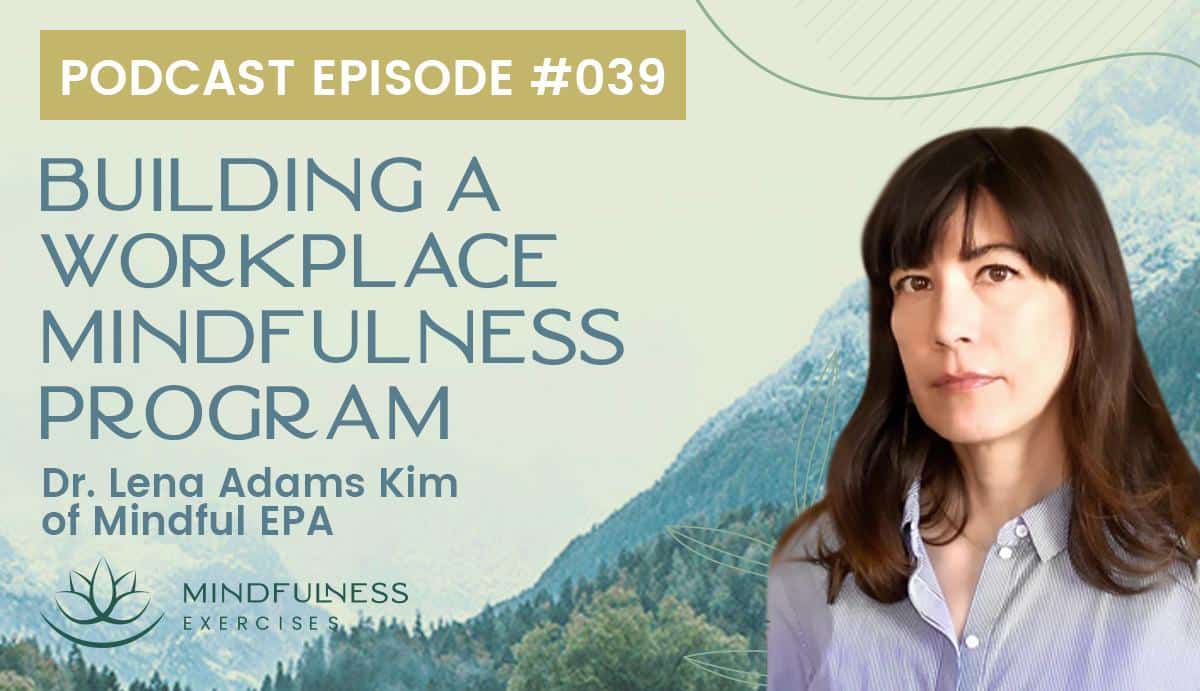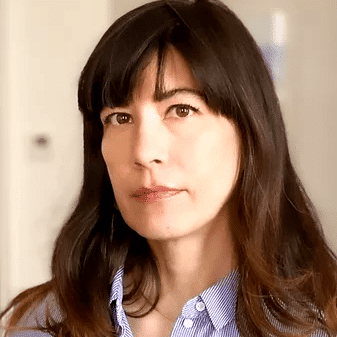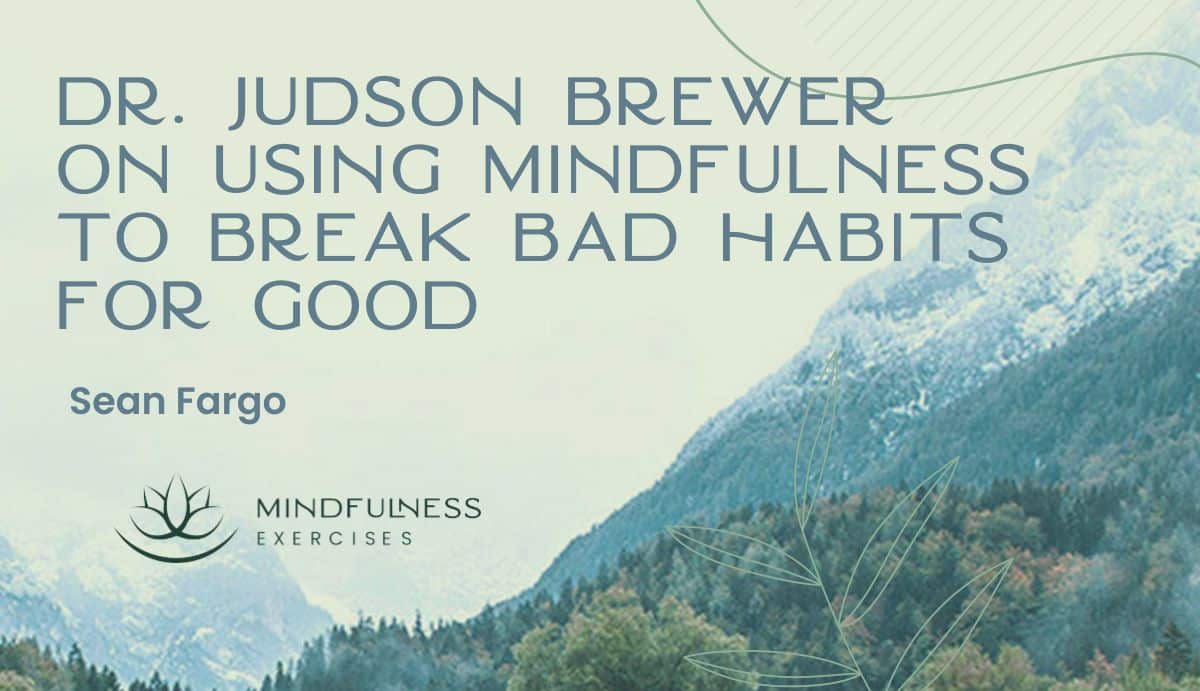Listen now

Could your workplace use a little more mindfulness? The benefits of mindfulness in the office are clear, and yet it can be difficult to convince corporate leadership to set aside the necessary space and time for mindfulness programming.
In this episode, Sean Fargo speaks with Dr. Lena Adams Kim, a graduate of the Mindfulness Exercises Mindfulness Meditation Teacher Training Program, and the founder of Mindful EPA, the Environmental Protection Agency’s nationwide workplace mindfulness program.
Dr. Kim describes how she overcame common workplace hurdles to begin a robust mindfulness program within a federal organization.
This talk is a brief excerpt of Dr. Lena Adams Kim’s live presentation to those enrolled in our Mindfulness Meditation Teacher Training Program. Learn more about this unique, online, self-paced certification program at https://mindfulnessexercises.com/certify/
What You’ll Learn in This Episode:
Show Notes:
Employee’s Struggles Before Mindful EPA
A culmination of stressful events inspired Dr. Kim to bring mindfulness to the EPA. The administration was sending the message that EPA’s work didn’t matter, scientists were leaving the organization and taking their institutional knowledge with them, and then a global pandemic hit. Alongside these well-known national events, people were grieving from great personal loss. As stress during online meetings became increasingly palpable, Dr. Kim had an idea.
“What I sensed, when I was jumping into team’s meetings, was a level of grief, desperation and lack of certainty or agency that I sensed when training communities in mindfulness at hospice. So with a sense of, ‘oh this feels the same,’ I thought, ‘I can certainly help.’”
What Helped The Program Gain Traction So Quickly
It’s unusual for a large agency to say yes to mindfulness so quickly. Several serendipitous events came together to allow Mindful EPA to take shape. A year prior, over 200 employees had heard Dr. Kim present the neuroscience of mindfulness at a special event. So, when she proposed ongoing mindfulness sessions, not only did the proposal come from a well-respected leader within the organization, but the memory of this successful past event was still fresh.
“You’re always thinking about not only the message, but you’re also thinking about your audience. How are they going to receive the message based on the channel and who the message is coming from?”
The Role of Neuroscience in Turning Skeptics into Believers
Scientists at the EPA are, by nature, skeptical. So in considering her audience, Dr. Kim chose to emphasize the neuroscience of mindfulness over the feel-good experience of mindfulness practice itself. As attendance at her sessions grew, she began offering longer mindfulness practices, but carefully balanced this with scientific information for the new attendees.
“And then, capitalizing on building advocates. People who come to the sessions who learned about their brain (we all like knowing about our brains) also felt a little bit more relaxed during the sessions, and then they would tell colleagues, ‘oh - do you know that these sessions are going on regularly? Let me forward you the invite.’”
“I knew people were telling one another. That’s when I knew I could start shortening the neuroscience part and lengthening the practice part. Very strategically.”
Modeling Mindfulness for Others
During the Mindfulness Exercises Teacher Training Program, Dr. Kim became aware that people constantly watch you not just as a “mindfulness teacher” but as a human being. This has made her more cognizant of her embodiment of mindfulness outside of her teaching sessions. It has also made her a better employee and given her the courage to share more of her personal story with others. Although she first found it difficult to be more mindful all the time, the more she tried, the more comfortable it became.
“At first, I was focused on making sure I presented in a way that was mindful. But thanks to neuroscience, the more I acted that way, the more I started believing I am that way… What was at first sort of a presentation of mindfulness - a little bit - became truly how I operate.”
The Structure and Types of Practices
In a high-pressure workplace, especially during the pandemic, practices that resonated best with people were those that promoted relaxation, such as breath awareness. Recent sessions have emphasized caregiving at home and the role of EPA employees as caregivers of public health and the environment. Dr. Kim is constantly trying to balance relevant, timely content with the relaxing foundational practices that help beginners feel at ease.
“I like to get people thinking… it’s not always about relaxation, it’s about becoming a better person.”
The Natural Arising of Self-Compassion
The more we practice mindfulness, the more the need for self-compassion tends to naturally arise. Once the mind has stabilized and a connection with the body is made, people begin to notice if they’ve been lacking in positive self-talk and care. Both Sean and Dr. Kim agree that people won’t necessarily ask for self-compassion practices, but these are the sessions that often generate the most positive feedback, even if disguised as simple ‘self-kindness.’
“The voice you hear most in the day is the voice in your head, the self-talk, and the way most of us have an angry little gremlin telling us we’re not doing this right or that right or they’re judging you. Once you get a handle on tweaking that and having it be more compassionate and positive, then the words that come out of your mouth are much more naturally in that direction as well….It’s so powerful.”
Additional Resources:

About Dr. Lena Adams Kim
Dr. Lena Adams Kim is a mindfulness and communications expert with EPA, who specializes in combining mindfulness and environmental justice.
Dr. Kim holds a PhD and two master's degrees from the University of Pennsylvania and Temple University. Her research has been focused on organizational psychology, communications, and how mindfulness intersects with social and environmental justice.
The founder of Mindful EPA, the EPA’s nationwide employee mindfulness program, Dr. Kim strives to empower others to understand and communicate their best selves - and in doing so, positively impact others, and the environment.
Dr. Kim is a graduate of the Mindfulness Exercises Mindfulness Meditation Teacher Training Program. This episode is an excerpt from a longer interview with Sean Fargo, made available to the students of that program.






